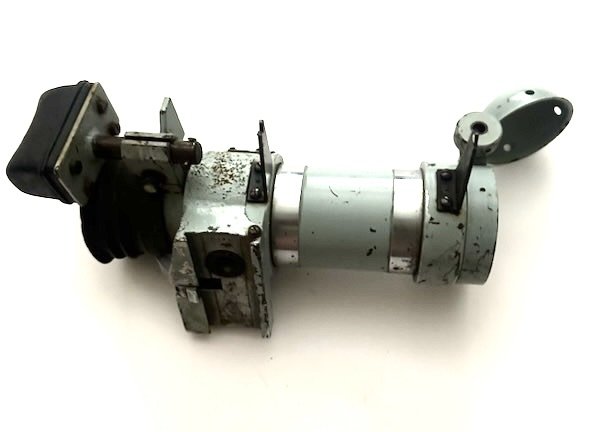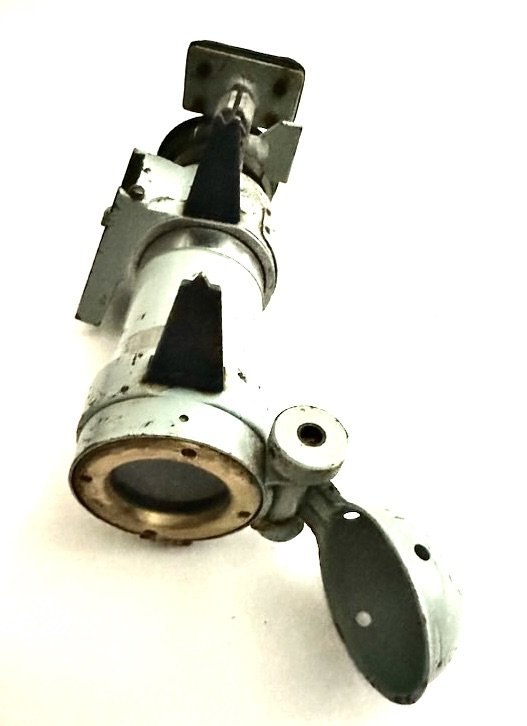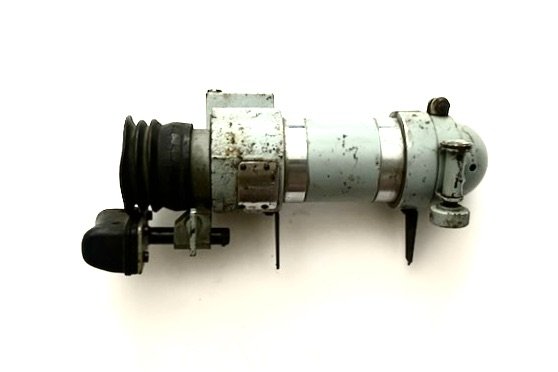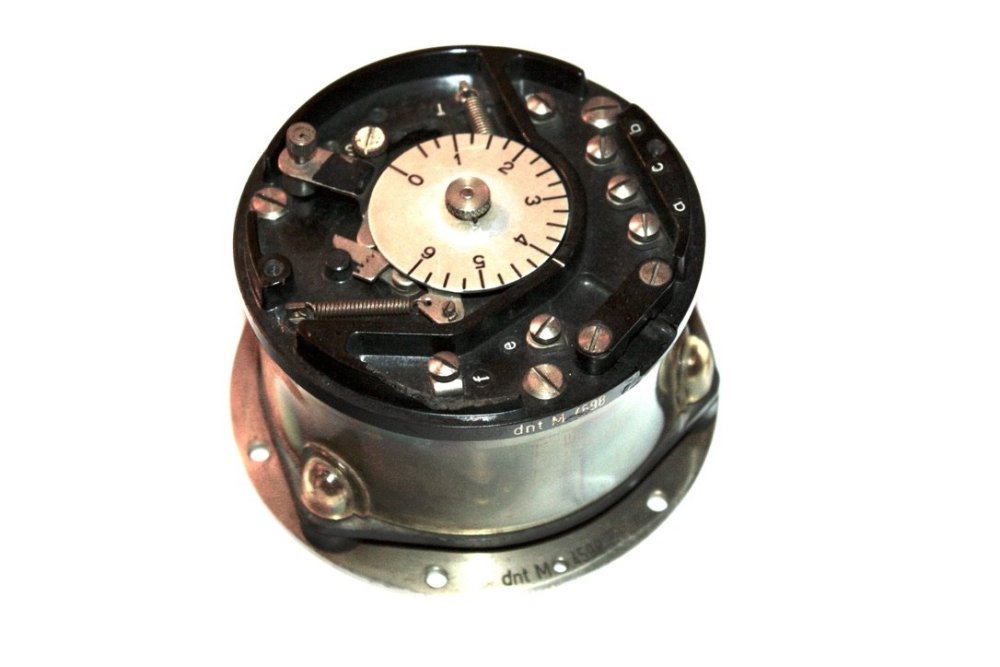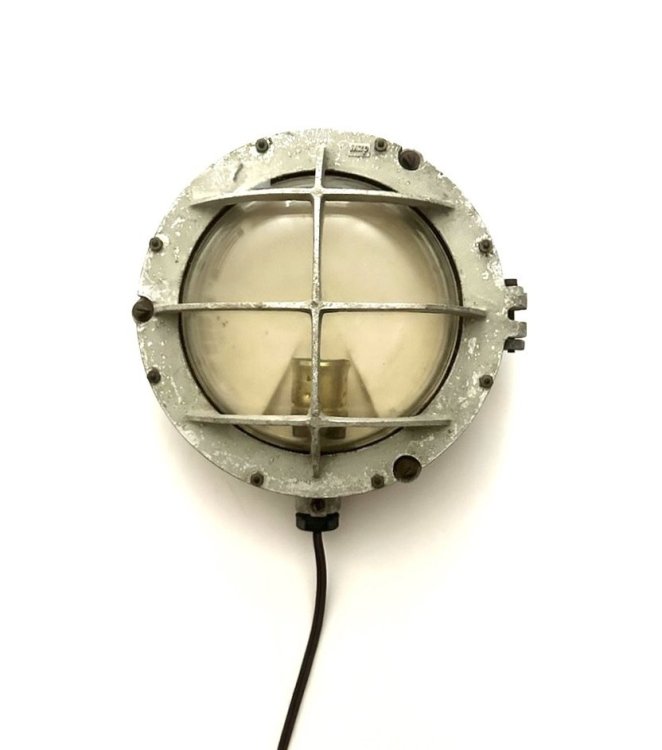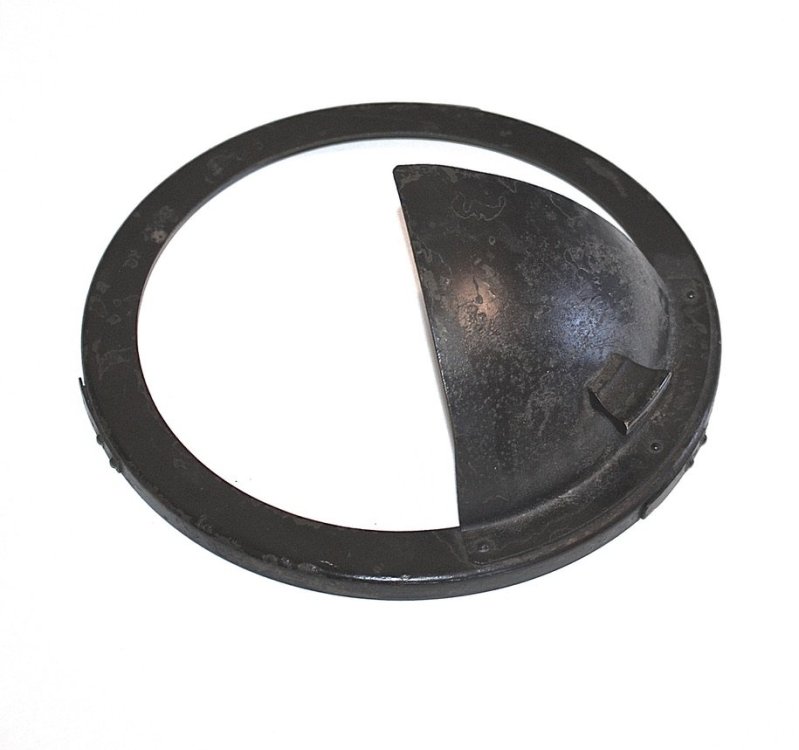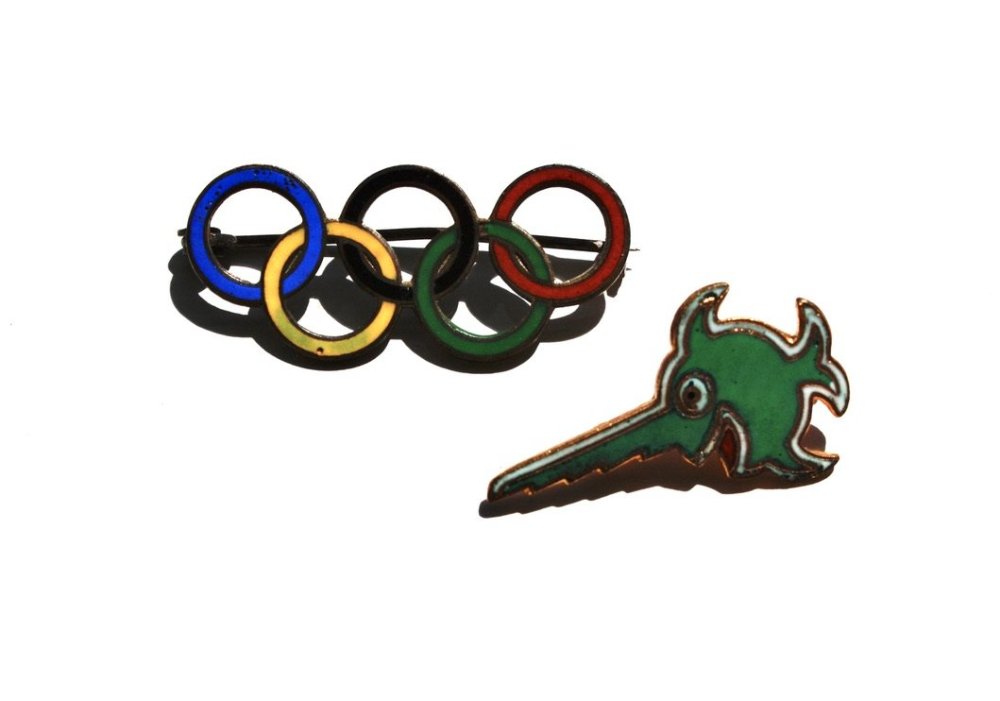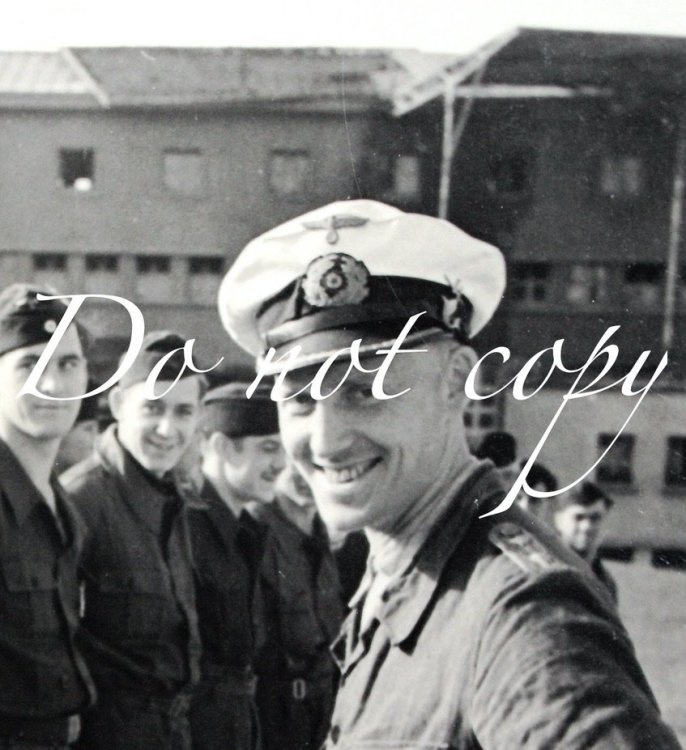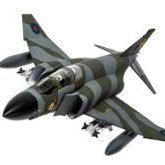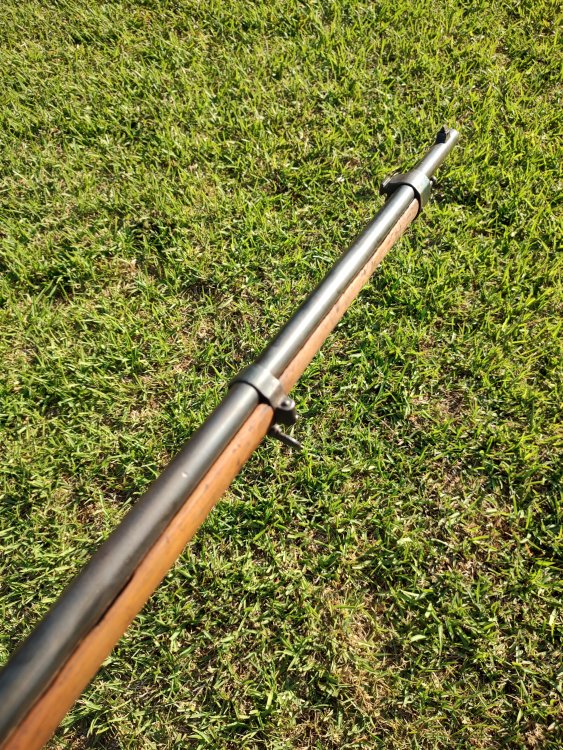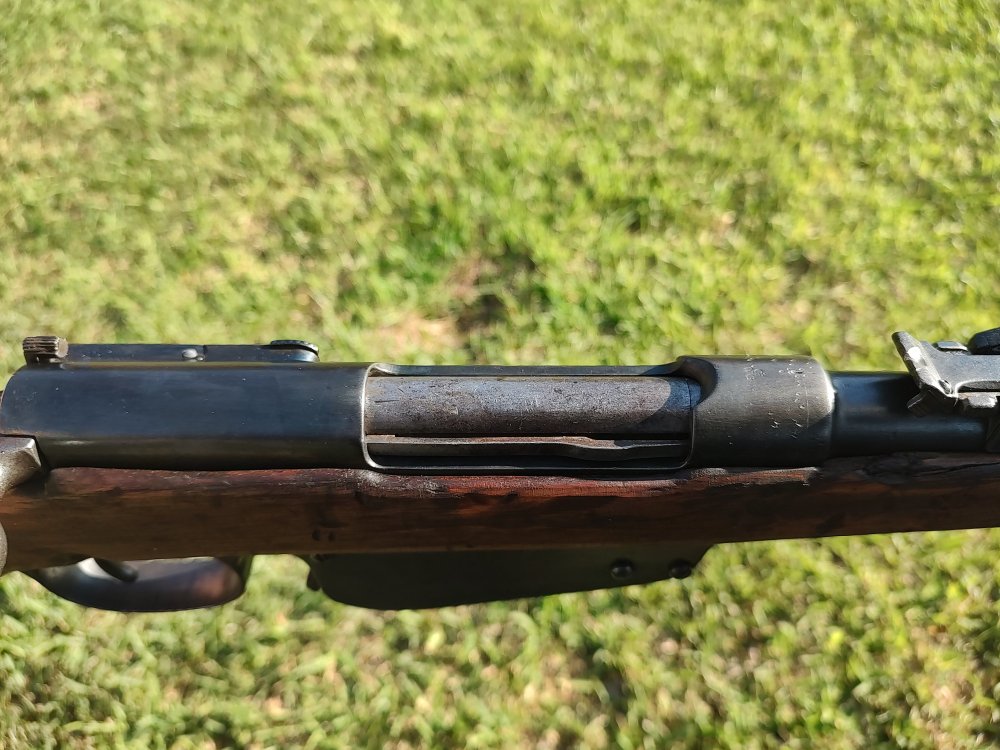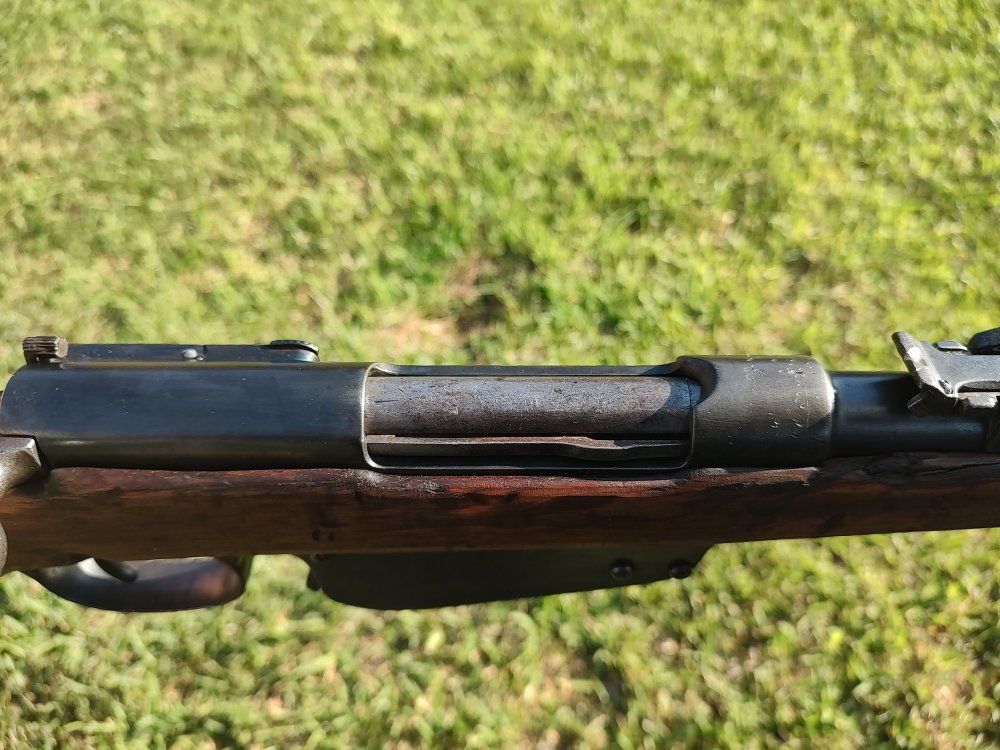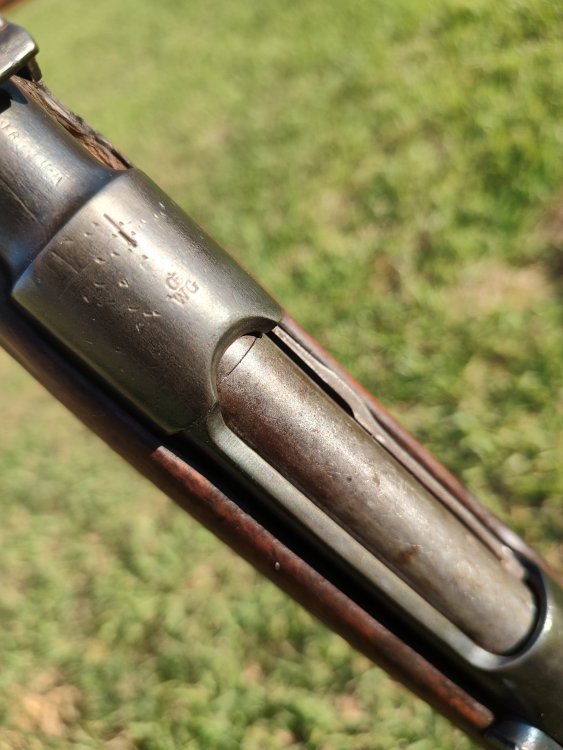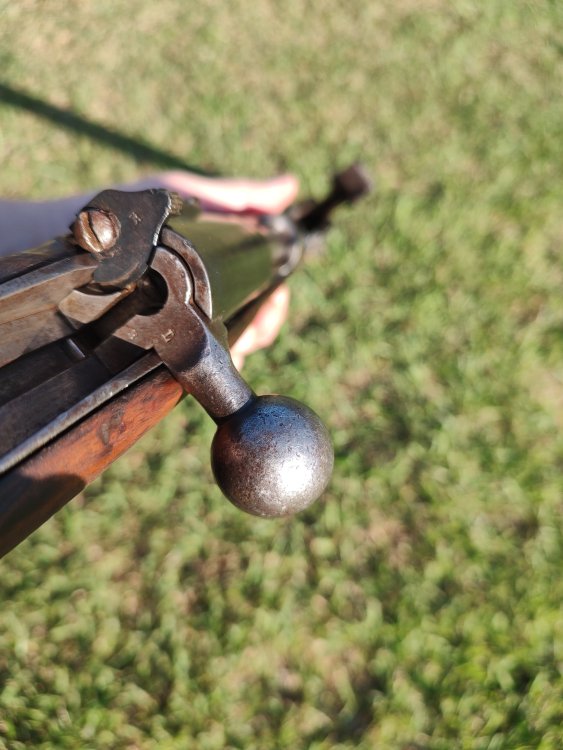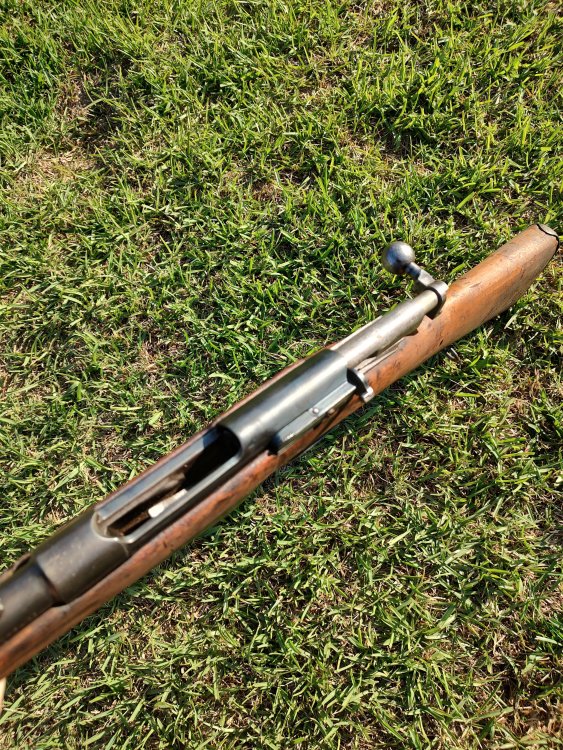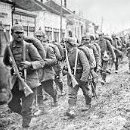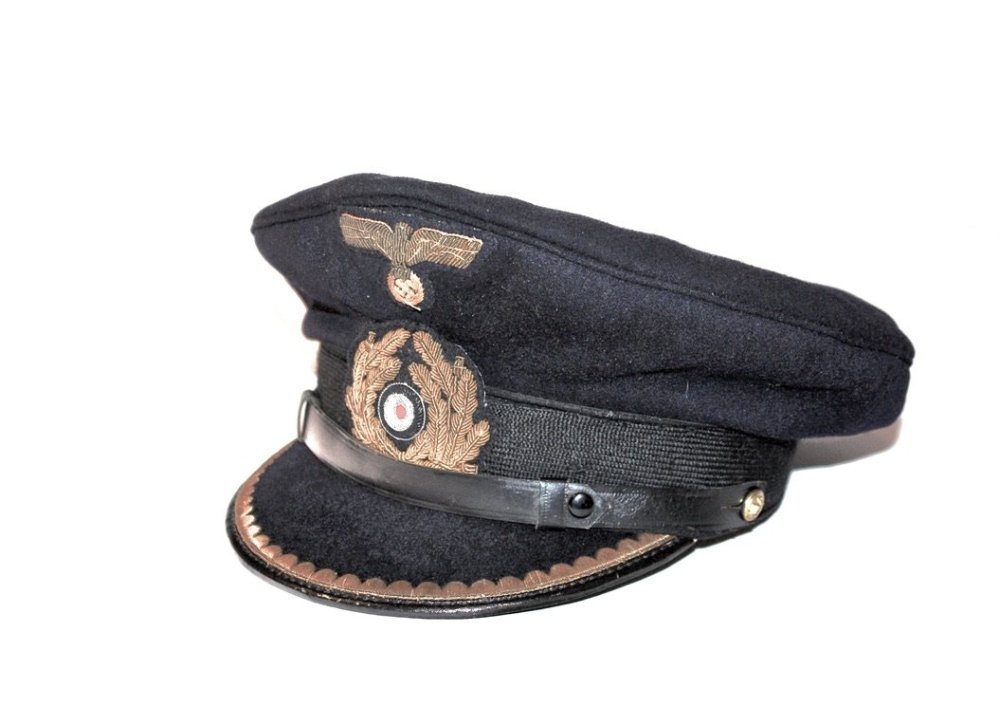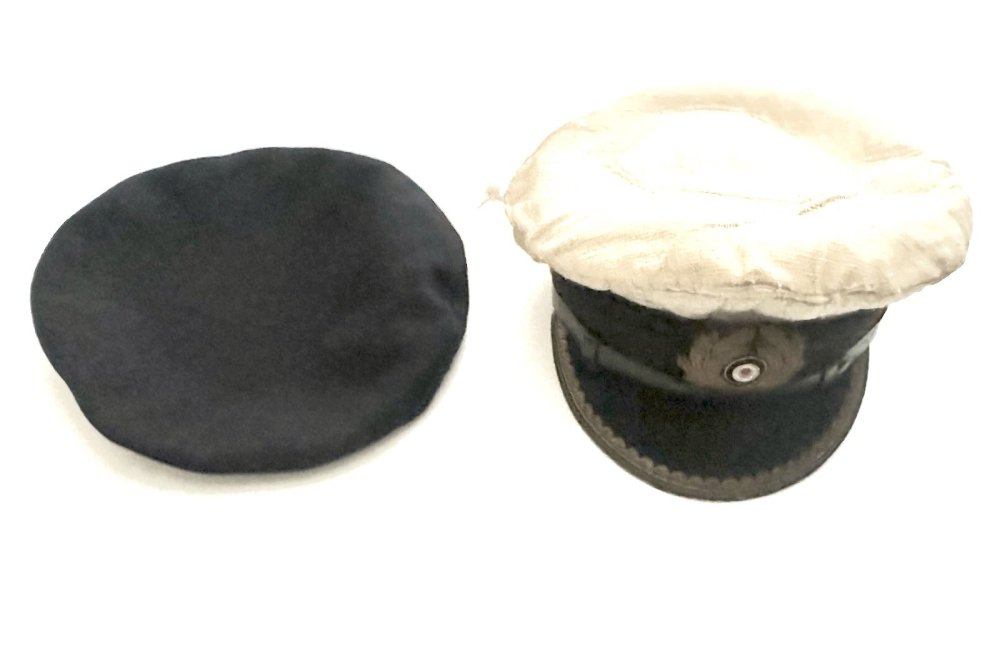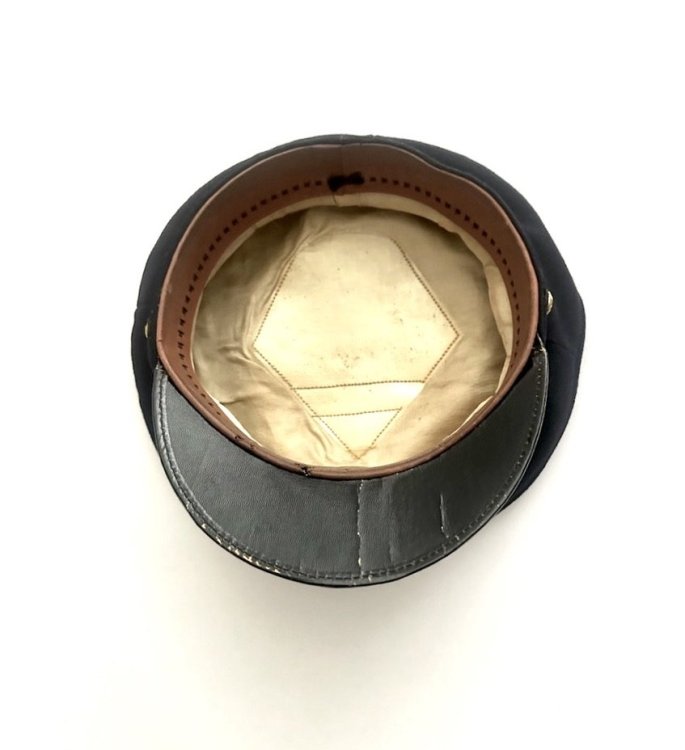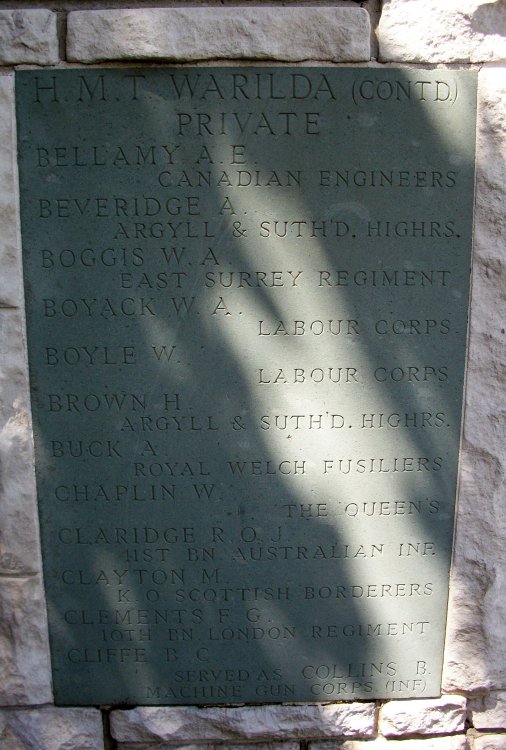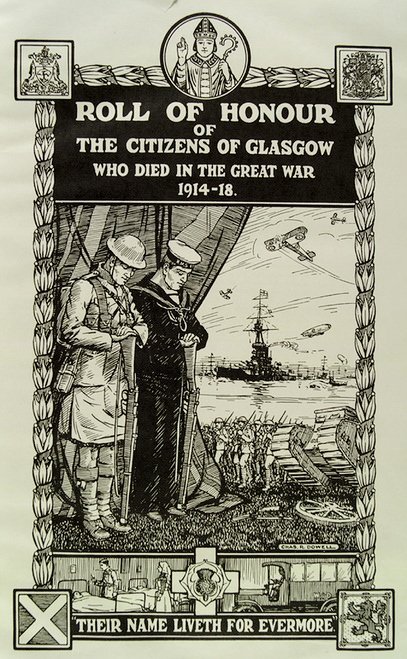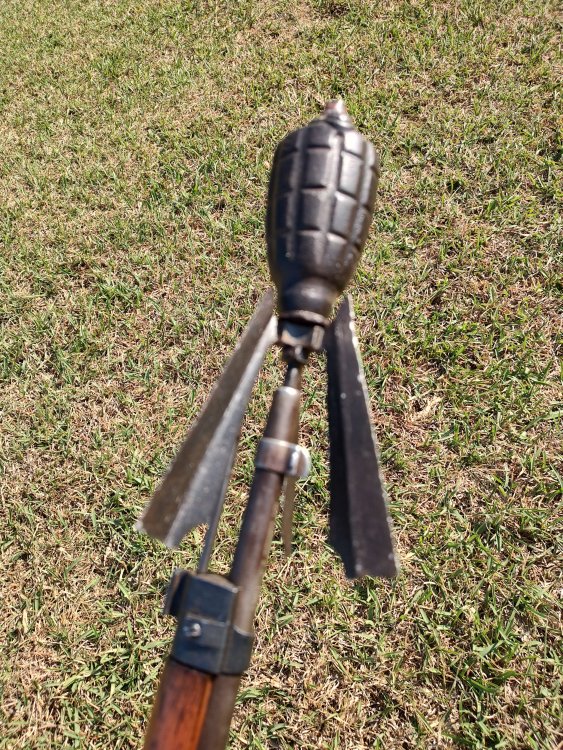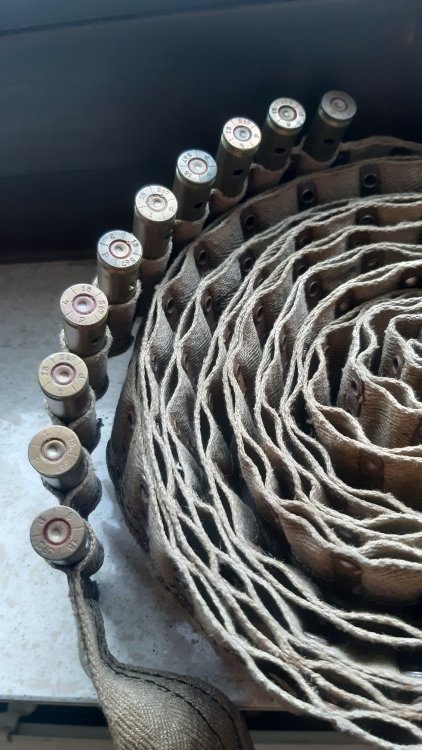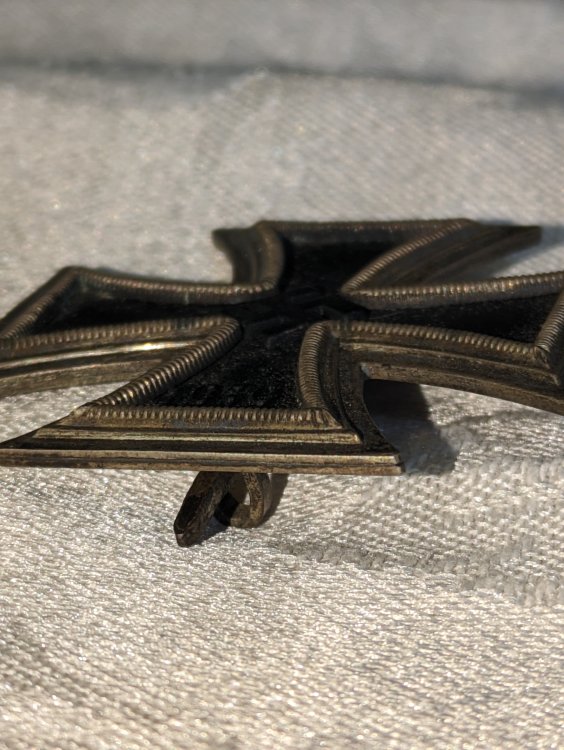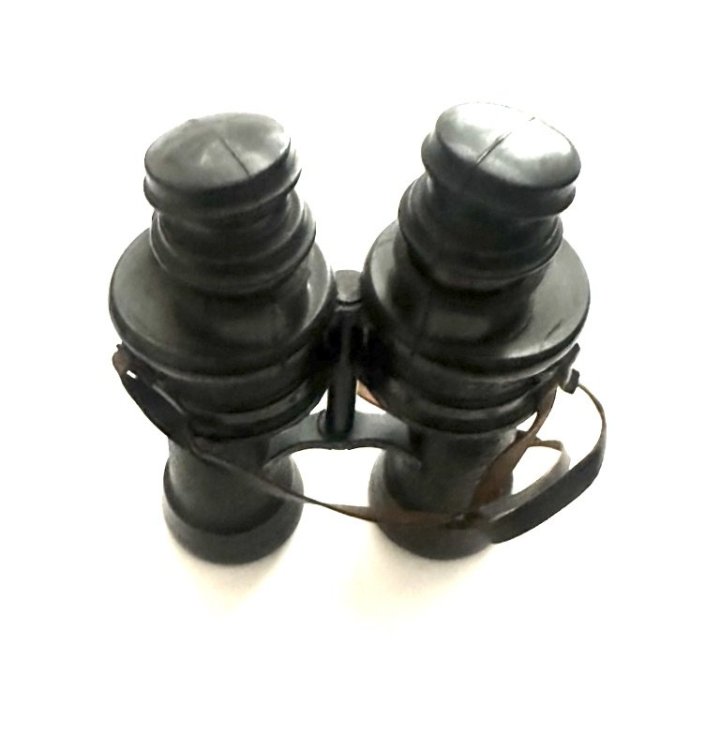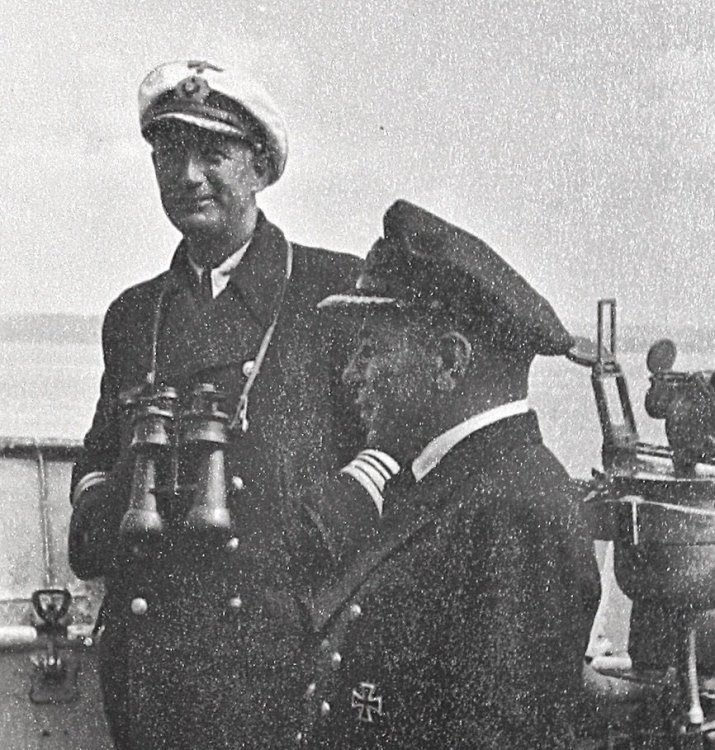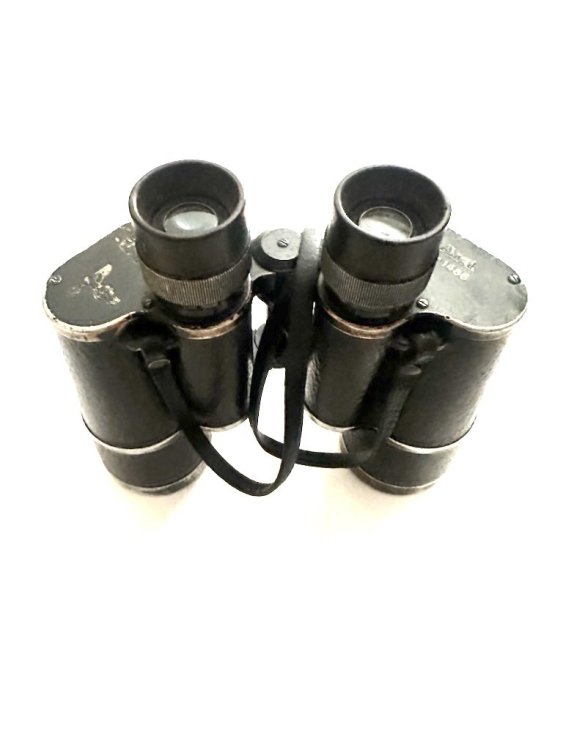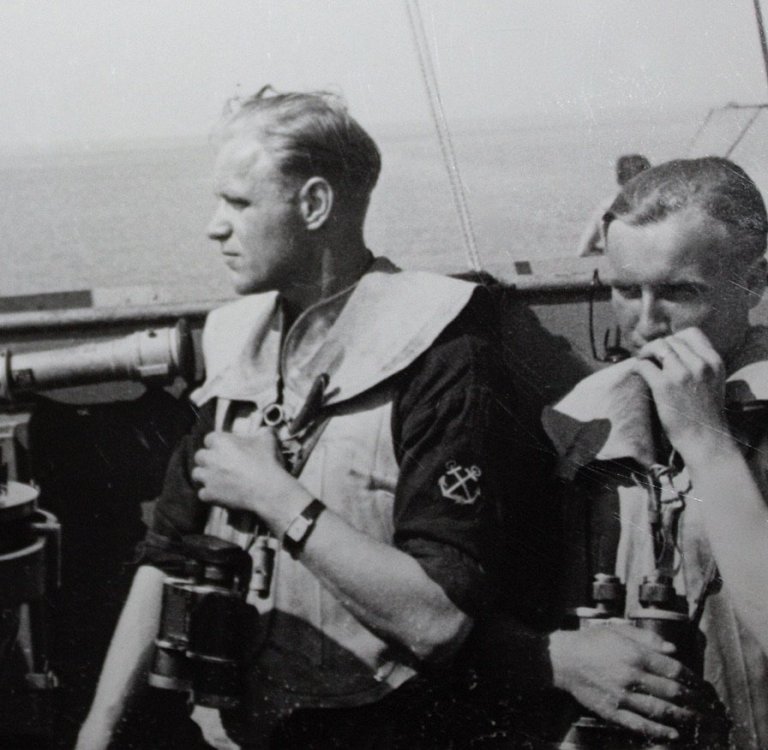Leaderboard
Popular Content
Showing content with the highest reputation since 18/04/24 in all areas
-
Pictured from my collection is an optical gunsight for a 3.7 cm anti-aircraft gun (Flak M42) manufactured for the Kriegsmarine. The code for this manufacture is 'dow' (Waffenwerke Brunn A.G. (1943 - Opticotechna Gmbh, Prerau Czech.)). The optic has a wide field of view with a ranging reticle. Even though designed to withstand harsh environments, this optic was made to be removed from the weapon system mounted on an U-boat .6 points
-
6 points
-
All: I just finished reading all the posts, what a great exchange between everyone. A big 'THANK YOU' to to Kenny Andrew, Fritz, Gildwiller1918, Eddieq, Urkund1939, Ycvu, and Phantom for sharing their knowledge with others. The ones asking the questions and the ones providing the answers make the Forum great. Best regards, John R.5 points
-
5 points
-
Pictured from my collection is dome compass (top) with lower binnacle case, type used aboard a Schnellboot. The Eagle, left of the gothic letter M on the bezel, was denazified with black paint, but not damaged. It is visible, just not in this photograph. The compass and sunshade (bottom) are marked C. PLATH of HAMBURG by the maker.5 points
-
Pictured from my collection is a stereoscopic range finder manufactured for the Kriegsmarine by Carl Zeiss Jena (blc). This instrument was used to accurately estimate distance to a target calculated through triangulation, based on the length of the range finder. It can be operated with or without battery. The range finder and all its accessories are kept in a grey painted wood storage box, not shown from collection. A range finder like mine is pictured on page 424 and page 425 of 'Deutsche Kriegsmarine Uniforms, Insignias and Equipment of the German Navy 1933-1945' by Eduardo Delgado.5 points
-
Pictured from my kriegsmarine collection is the emblem of the 1936 Olympics rings (top left) that was worn as an U-Boat tradition cap insignia by several crews, including U-165 and U-995. Also pictured is the insignia for the 9th U-Boat Flotilla 'Laughing Sawfish' (bottom right). Examples of the these tradition badges are on page 64, page 77, and page 83 of 'Torpedo Los! THE FASCINATING WORLD OF U-BOAT COLLECTIBLES' by Gordon Williamson.5 points
-
Pictured from my kriegsmarine collection is an emblem and a badge used by the Ubootwaffe as tradition cap insignia. The emblem for the National Socialist League of the Reich foe Physical Fitness( left) was worn as an U-Boat cap insignia by the crew of U-274, as was the Edelweiss gap device of the German Army Mountain Troops (right) by the crew of U-124. Examples of the these tradition badges are on page 77, page 81, and page 83 of 'Torpedo Los! THE FASCINATING WORLD OF U-BOAT COLLECTIBLES' by Gordon Williamson. Pictured from my collection is a U-Boat tradition cap insignia 'Swordfish spearing an enemy sip' for the U-441 being worn by its Commander, Klaus Hartmann (white cap). All 51 hands, including Hartmann, died when U-441 was sunk by Allied depth-charges on 30 June 1944.5 points
-
Hi John R., Thank you for your donation of 75.00 GBP. We look forward to improving the forums with your donation. Thanks Treasure Bunker Forum4 points
-
Just got around to watching Greyhound, it was pretty good depiction of the Atlantic Ocean Battle. Although I understand that most U-boat Commanders were aggressive, in the movie it seemed to me they were very aggressive, to the point of recklessness. Just my opinion, but still an entertaining movie.4 points
-
4 points
-
Here is my new Mannlicher 1890 Rifle or Infanterie Repetiergewehr M88/90. In 1888, the Austro-Hungarians changed the contract on their model 1886 rifles, mainly due to the French introduction of the smokeless powder Mle. 1886 Lebel. This involved moving away from the 11 x 58R cartridge to the 8 x 52R cartridge. The M88 was further upgraded to fire the new smokeless powder M1890 ball cartridge. The rifles that were modified for this were called the M88/90. This is a straight pull bolt rifle, and it is a very simple design with very few parts for disassembly. Some of the changes made to for the conversion to the new smokeless cartridge was adding a more narrow and shallower magazine, as well as a rechambered barrel and sight modifications. The barrel is stamped W-n 91 and marked OEWG. The rifle is about 50 inches long, and weighs 8.9 pounds, with a 5 round capacity magazine. Slightly over a million of these rifles were produced and like many other nations, these were also pulled out of storage for rear echelon units to replace massive losses at the front. This rifle at some point made it to Africa as it has the AOI stamp on the buttstock. This was a RTI gun, and was quite filthy and worn, but I cleaned it thoroughly and got it looking decent once more.4 points
-
Hi Eddie, sorry I missed this post, yes unfortunately there was no "BM" RZM prefix, they are only found on fakes.3 points
-
Thank you John, and we continue to look forward to your items as well.3 points
-
Gildwiller1918: Hello. Fantastic acquisition, a great addition. Thank you for sharing your new antique Mannlicher 1890 Rifle with the Forum. Thank you for continuing to be a steward of history. Best regards, John R.3 points
-
The swastika's edges look dull which is not a good sign.3 points
-
Picture is a two-piece officer''s visor cover for junior grade from my collection of Kriegsmarine antiques. The cap has a hand-embroidered gilt wire national emblem and, cockade, as well as gold wire piping. This cap belonged to Werner Wendt (1916-1988), Captain of U-765. The U-765 was sunk in the North Atlantic on 6 May 1944 by depth charges on its first war parol. Werner and 10 crewmen survived, 37 dead. Pictured below is the underside view of the visor cap. Pictured below is the two-piece visor cover disassembled. In this configuration, a white or blue cap-covers could be worn. Because I do not like to take this cover apart, I used a photo taken years ago.3 points
-
phantom: Hello. Thank you very much for the compliment. It is a pleasure to share my collection of Kriegsmarine antiques with the Forum. Kindest regards, John R.2 points
-
2 points
-
Soak for a few hours in a bath of lemon juice (citric acid) and water or a solution of oxalic acid. Remove and rinse thoroughly when sufficiently clean, dry thoroughly. Rub with a suitable oil to preserve2 points
-
2 points
-
2 points
-
Progress is being made in the restoration of the Heinkel at Hawkinge - https://www.kbobm.org/heinkel_project.html2 points
-
Update Alexander Married Elizabeth Campbell Baird born 1885 in Govan Glasgow, they were married on the 26 April 1912 and lived at 16 Cogan Street Pollockshaws. They had 4 children Mary Campbell Beveridge born 9th April 1912. George Beveridge born 4th April 1913. Alexander Beveridge born 11th April 1914. John Beveridge born 29th July 1917. This is how they are listed on his Pension Records. Alexander is remembered on The IWM .ORG.UK Lifestory by 2 people. Also on the Hollybrook Memorial Southampton. I also found him on the Roll of Honour of the Citizens of Glasgow, were he is listed twice, first at his Parents address of 24 Bengal Street Pollockshaws were he lived before he got married. and at 16 Cogan Street Pollockshaws were he lived after he got married giving the appearance that they are two different people when in fact they are the same person.2 points
-
Here is my new acquired WW1 Italian Benaglia Rifle Grenade. It is in overall very good condition with small areas of pitting on the main body. This was a rodded rifle grenade used with the M91 Carcano rifle. This is the 2nd model with only one filling hole and stabilizing fins. The range of this was about 130 meters (427 ft) and could be used in both the regular length and carbine Carcano's.2 points
-
2 points
-
2 points
-
2 points
-
Hi Kenny Are all badges marked with a BM known fakes- I’ve got a couple of German youth badges marked the same. E2 points
-
Thanks everyone! And thank you for the reference links! I don't have any postcards with german machine guns, but I have quite a few postcards written by belgian frontline soldiers. There are definitely a few interesting ones among those. I checked the headstamps of the cartridges again and they're all 1918 dated. I thought they were 1916 and 1917, but apparently I remembered that wrong.2 points
-
Here is my Mauser HSc pistol, the HSc stood for: Hahn Selbstspanner or self-coking hammer pistol. While originally developed as a commercial pistol, it was incorporated into military service once war broke out. In late 1940 these went into production with serial numbers beginning at 700,000, which was a carryover of the previous model, the Mauser 1934 pistol. Early models had a more refined appearance and high-quality machining, naturally as the war progressed the quality decreased. The initial batch of pistols went the German Navy, and afterwards the Army got the bulk (54%), followed by other organizations. This model is the 3rd variation which has the acceptance mark of an Eagle/135 which stood for weapons produced at Mauser Werke AG, Oberndorf am Neckar, Germany. The pistol has all matching numbers and was produced in early 1942. It also has the Eagle/N proofs in the correct locations. The pistol is 6 inches long and weighs 1.9 pounds unloaded. it fired a 7.65mm semi cased cartridge or .32 ACP. After the war, the Mauser factory at Obendorf was in the French occupation area, and production resumed in 1945 to 1946 for French units in Indochina. Overall production ran until 1977 in which these were supplied to German police forces and to commercial markets. Just a side note, this was the first WW2 pistol I got my hands on a long time ago.1 point
-
1 point
-
1 point
-
1 point
-
1 point
-
1 point
-
Thanks Xcvu! Yes, I tested the core and everything and it seems to pass the tests. The core is magnetic, the frame is not, and it does seem to be a multi-piece construction. Not sure how to judge the sharpness of the swastika since it's got some wear to it, and the colour between the chipped swastika and the frame look similar given the tarnishing, but it's difficult to tell. It's tough, I've done lots of research online about these crosses over the years, but I haven't had the chance to handle many that I know are real, so I'm definitely still finding my feet in terms of recognizing all the details and knowing what to look for. It's great to get the input from those who have much more experience with these things.1 point
-
1 point
-
I also have an EK2 with markings on the smaller ring. It's a 1939 version, so I don't know if it would be the same story as the earlier crosses, but it seems like some makers did add additional markings to the smaller ring. I'll post some pictures below. Depending on how it catches the light, the mark on the smaller ring looks like either a fragment of an X, a kind of misshapen M, or some kind of ohm symbol, but like I said it's extremely hard to make out. I posted it to another forum because the makers mark on the main suspension didn't line up with the font of that maker, and I had concerns about its originality...it's stamped "4" which would be for Steinhauer & Lück, but the style of the 4 doesn't look like any of theirs I've seen. The consensus there was that the cross looked original, and might actually be from maker "24" who were apparently known to have mis-struck or faint 2's on some makers marked examples. They also shared some other examples from that maker with additional marks to the smaller ring as well. I would be really interested to get people's opinions on this cross here, but if we agree that this one is original, it would certainly seem like there are genuine examples out there with marks on the smaller rings.1 point
-
Hi everyone! This is my first time posting here on the forum, so I'll introduce myself. I'm Bram, I'm 20 years old and I collect all kinds of ww1 militaria. I'll continue sharing bits and pieces from my collection, but I'll start with some Mg08 and Mg08/15 related stuff. I have three standard wooden ammo boxes. Two of them still have a lot if original paint and are marked R. Görs & kallmann on the inside. They have some sort of metal shielding on the inside too. I got the third one for cheap, as it was repainted after ww1. I was able to remove all the postwar paint, but unfortunately there wasn't much original paint left. It still looks much better than it did before though. I also have one metal double ammo box also with a lot of original paint and a parking on the lid. The larger box in the back is a transport case for two ammo drums for the Mg08/15. It has a lot of original paint and it even has the original protective pads on the inside of the lid. The small box in the middle is for the hilfslafette. The inside of the lid still has the schematics for the parts that should be in there. The leather strap is marked 1917. The large flat box in the back that says 'Reinigungsmaterial' used to contain all kinds of cleaning materials for the Mg. It has a papercloth handle on the side. The ammo belt is also an original example. It isn't a full 250 round length anymore, but it's still a nice and rare piece. It's nicely marked and made in 1917. All the rounds in the picture are dated 1916 and 1917. They are all deactivated because I can't own live ammo where I live. Hope you guys like it! Greetings, Bram1 point
-
Welcome to the forum Bram, very nice collection, USMC have you asked mg1918 to join? He would be very welcome1 point
-
Badge 3 BM M1/122 is a known fake, badge 2 looks almost the exact same, so I would say this one was bad too unfortunately.1 point
-
1. M1/70 HJ Honour Award is a copy unfortunately. 2. Can't make out the maker, is it maker stamped? 3. Can't make out maker ? 4. Looks OK 5. Looks OK 6. I don't like this one either1 point
-
https://www.spiegel.de/politik/ehrenfried-tschoeltsch-a-bf87a92e-0002-0001-0000-000043064995 About the author Ehrenfried Tschoeltsch, 60, Generalmajor außer Diensten in Darmstadt, früher Kommandeur der Luftwaffen-Unteroffizierschulen und Bearbeiter der Rekruten-Fibel »Der Dienstunterricht in der Luftwaffe«, fahndete bis vor kurzem während seiner Spaziergänge nach Übertretern der Verkehrsvorschriften, die er der Polizei anzeigte. Inzwischen hat der General seine Tätigkeit als selbstbestallter Helfer der Polizei eingestellt, nachdem er ihr zehn Verkehrsteilnehmer - »wegen völliger Nichtbeachtung aller Verkehrsregeln« - gemeldet hatte. Der Spiegel 52/1956 Ehrenfried Tschoeltsch, 60, Generalmajor a.D. in Darmstadt, former commander of the Lufwaffen-Unteroffiziersschulen and author of the recruits handbook "Der Dienstunterricht in der Luftwaffe", during his regular walks, kept watch on traffic offenders, which he reported to the police. In the meantime, the self-appointed assistant of the police, since having reported 10 traffic participants "for complete disregard of traffic rules". What a comedown for a former general! Luckily, he was not living in the DDR, where observing and reporting your fellow citizens was a sort of national sport (Stasi-Spitzel & Helfer der Volkspolizei) A photo from the Reichswehr period1 point
-
Pictured from my collection is on more 7x50 power binoculars, but manufactured by Ernest Leitz (beh). The Binoculars have original leather neck strap, as well as rubber armor. Binoculars like this one is pictured on page 423 and 424 in Deutsche Kriegsmarine Uniforms, Insignias and Equipment of thw German Navy 1933-1945 by Eduardo Delgado.1 point
-
Pictured from my collection is another set of 7x50 power binoculars, but manufactured by Cark Zeis Jena. The Binoculars have original leather neck strap, as well as a ranging reticle in right ocular. Binoculars like this one is pictured on page 233 in in Volume 3 of Die Kriegsmarine Uniforms & Traditions by John R. Angolia and Adolf Schlicht.1 point
-
1 point
-
So... the mystery item remains a mystery for a bit longer... actually, I love the suspense! Thanks so much for your TIME and Expertise.1 point
-
Hi all, Just back from our house in France which is our home now, we just work in Scotland. France publishes many good military history magazines but there are few in Britain. I am interested in WW2 and can always get interesting material in 2GM (WW2), Gazettes des Uniformes, 1939/45, Batailles and of course Militaria. Armour is catered for with Batailles et Blindes and TNT (Trucks and Tracks). Military Modelling is catered for by two or three mags. eg Steel Masters. WW1 and the middle ages have heir own publications. There are also specials that come out 2 or 3 times a year for most titles. Why can't we have the quality of these in UK? Dave1 point
-
Should perhaps have said several of the French magazines (and specials) are available from the big Military booksellers who have websites. The magazines themselves can be purchased directly from the publishers on the web. Postage can be pricy though, especially for one magazine. Dave1 point






